Thingiverse
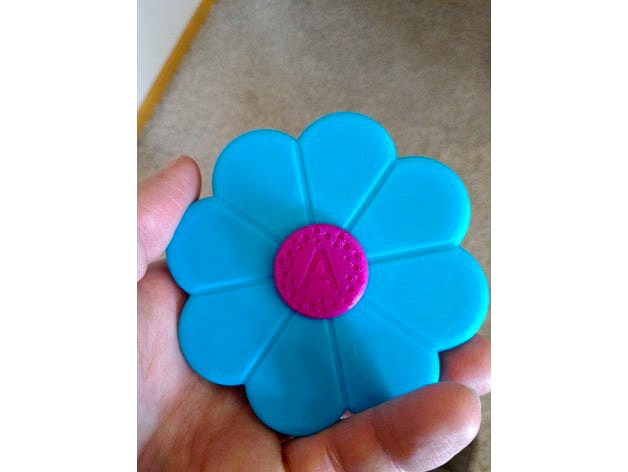
Flower Fidget Spinner by PlacidCat
by Thingiverse
Last crawled date: 3 years ago
An Excellent Basic Spinner
I have two kids on the Autism spectrum who are exceedingly high-functioning but also tend to fidget quite a bit. Contrary to what you might have been reading in the news, fidgeting is not necessarily a bad thing! Yes, if you have a classroom of kids conspicuously spinning their fidgets, comparing them, doing tricks and the like, then yes, they are problematic. For kids with ADHD, autism, or those who just learn differently, a spinner can be a discrete, quiet means of staying on task by occupying their hands. Incorporated into an IEP, they can be exceedingly helpful.
After designing a couple of minimalistic spinners for my two kids on the spectrum, my other two kids thought it would be nice to have spinners as well (for home use, of course). This is one I designed with the input of my daughter.
Trap those pennies!
I love designing "impossible" things for my 3D printer. One thing that truly baffles those unfamiliar with FDM printers is the idea of "trapping" objects inside a print. My spinners all make use of this concept.
Instead of using comparatively expensive bearings, my spinners all use trapped pennies. Pennies are, well, cheap! They also weigh a decent amount, allowing you to use quite a few while still keeping costs down.
This particular print makes use of 24 pennies - 8 sections of 3 pennies each. It results in an exceedingly heavy spinner resulting in some great spin times, if you invest in the right kind of bearing or just do a good job cleaning a cheap one.
Make use of your printer's pause function if you have one. I'm actually a fan of manually splitting my gcode files - something I wouldn't advise unless you know the commands fairly well or you might end up ruining your print.
I would recommend examining your slicer to find out where to pause the print - just before it bridges over the penny cavities. I can't tell you the precise layer because that'll depend on what layer height you choose along with whether or not you use a raft.
Penny problems!
One disadvantage of pennies is imbalance. Pennies have changed composition quite a bit over the years. As such, their weight varies considerably between the "olden years" and those "modern" pennies.
You might consider collecting all pennies from one year. Alternatively, pair pennies from the same year on opposing sides. The better you pair them, the more balanced your spinner will be.
Tight fit!
I have my printer tuned in fairly well. The tolerance on the center bearing is only 0.1mm for the radius (0.2mm for the diameter). I have to actually tap my bearings in using a flat block of wood and a hammer but once they are in, they tend not to come out!
Given the variance of printers I can't guarantee your printer will yield the same results as mine. Your pennies may be too tight. Mine jingle a little. Your bearing might be too loose. Mine is snug. All I can say is you might need to play with your scaling factors should things not work the way you expect.
That said, with some effort, this spinner can give that special someone you know a little bit of fun. My kids like theirs, even if it is just to play in their spare time.
Where's that letter?
Well, that letter was in the original design for the caps. I'm not including it here in case you want to use Meshmixer or the like to "emboss" some other letter.
DISCLAIMER
You know the drill. You are printing something on your printer. You are responsible for what you print. Don't give spinners to kids, adults or pets who have a tendency to pull apart things and place them in your mouth. Several components of a spinner would be rather nasty to your health should one try to ingest them. Don't throw a spinner at someone - it hurts.
Use common sense. Be responsible. Have fun!
I have two kids on the Autism spectrum who are exceedingly high-functioning but also tend to fidget quite a bit. Contrary to what you might have been reading in the news, fidgeting is not necessarily a bad thing! Yes, if you have a classroom of kids conspicuously spinning their fidgets, comparing them, doing tricks and the like, then yes, they are problematic. For kids with ADHD, autism, or those who just learn differently, a spinner can be a discrete, quiet means of staying on task by occupying their hands. Incorporated into an IEP, they can be exceedingly helpful.
After designing a couple of minimalistic spinners for my two kids on the spectrum, my other two kids thought it would be nice to have spinners as well (for home use, of course). This is one I designed with the input of my daughter.
Trap those pennies!
I love designing "impossible" things for my 3D printer. One thing that truly baffles those unfamiliar with FDM printers is the idea of "trapping" objects inside a print. My spinners all make use of this concept.
Instead of using comparatively expensive bearings, my spinners all use trapped pennies. Pennies are, well, cheap! They also weigh a decent amount, allowing you to use quite a few while still keeping costs down.
This particular print makes use of 24 pennies - 8 sections of 3 pennies each. It results in an exceedingly heavy spinner resulting in some great spin times, if you invest in the right kind of bearing or just do a good job cleaning a cheap one.
Make use of your printer's pause function if you have one. I'm actually a fan of manually splitting my gcode files - something I wouldn't advise unless you know the commands fairly well or you might end up ruining your print.
I would recommend examining your slicer to find out where to pause the print - just before it bridges over the penny cavities. I can't tell you the precise layer because that'll depend on what layer height you choose along with whether or not you use a raft.
Penny problems!
One disadvantage of pennies is imbalance. Pennies have changed composition quite a bit over the years. As such, their weight varies considerably between the "olden years" and those "modern" pennies.
You might consider collecting all pennies from one year. Alternatively, pair pennies from the same year on opposing sides. The better you pair them, the more balanced your spinner will be.
Tight fit!
I have my printer tuned in fairly well. The tolerance on the center bearing is only 0.1mm for the radius (0.2mm for the diameter). I have to actually tap my bearings in using a flat block of wood and a hammer but once they are in, they tend not to come out!
Given the variance of printers I can't guarantee your printer will yield the same results as mine. Your pennies may be too tight. Mine jingle a little. Your bearing might be too loose. Mine is snug. All I can say is you might need to play with your scaling factors should things not work the way you expect.
That said, with some effort, this spinner can give that special someone you know a little bit of fun. My kids like theirs, even if it is just to play in their spare time.
Where's that letter?
Well, that letter was in the original design for the caps. I'm not including it here in case you want to use Meshmixer or the like to "emboss" some other letter.
DISCLAIMER
You know the drill. You are printing something on your printer. You are responsible for what you print. Don't give spinners to kids, adults or pets who have a tendency to pull apart things and place them in your mouth. Several components of a spinner would be rather nasty to your health should one try to ingest them. Don't throw a spinner at someone - it hurts.
Use common sense. Be responsible. Have fun!
Similar models
thingiverse
free

Wheel fidget spinner - complete with tire by PlacidCat
...ealth should one try to ingest them. don't throw a spinner at someone - it hurts.
use common sense. be responsible. have fun!
thingiverse
free

Steampunk Fidget Spinner by PlacidCat
...ealth should one try to ingest them. don't throw a spinner at someone - it hurts.
use common sense. be responsible. have fun!
thingiverse
free

Penny Fidget Spinner by 1Eye
...es if you want them)
update: printed one out in ninjaflex for fun. much more durable but the pennies need to be glued in place...
thingiverse
free

Super Simple Mini Fidget Spinner for Little Kids - Bearingless by Brentox
...et spinner. my 3 year old loves it, and has no problem using it.
no supports or rafts necessary. recommend pla with good cooling.
thingiverse
free

608 'fidget spinner' bearing - fully 3d printable by francfalco
...#39; bearing performance but if you have your printer nicely tuned (not over-extruding) then this can be used in spinners.
enjoy!
thingiverse
free

Fidget Spinner (.75" Bearing / 4 Penny Weights) by ssj2gohan
...ghts) by ssj2gohan
thingiverse
a fidget spinner that uses 4 pennies on each arm for weights and a .75" skate board bearing.
thingiverse
free

penny weighted fidget spinner by Intrudermax
... intrudermax
thingiverse
fidget spinner that uses u.s. pennies for weights. if you make one, don't forget to post a picture!
thingiverse
free

Printed Spinner Bearing and Weights by kwardle
...tps://www.thingiverse.com/thing:2078189
and were each printed on a formlab form2 printer in tough v3 resin for durability.
enjoy!
thingiverse
free

penny spinner by hayday
... side is upside down so to see the slots and the pins to go in to the bearing click thingview and drag around till you see them).
thingiverse
free

Fidget spinner with bearing ready to print by BlazeMX13
...i a spinner with a bearing so you don't have to but one haven't made it yet hope it works use the amazing vihelmo 1 and 2
Placidcat
thingiverse
free

Building block Arrow by PlacidCat
...epresenting me, i regret i must take down my object.
my kids will still enjoy their toys, but this leaves me saddened.
god bless.
thingiverse
free

Excelvan hub for BobsCNC RP9 v2 by PlacidCat
...rcise in using a more advanced cad tool. i doubt there is any benefit in printing this over my original but it might be prettier!
thingiverse
free
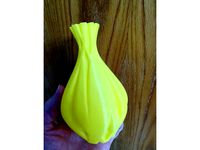
Sinew vase #1 by PlacidCat
...bination with shorter layer heights.
for an example of the vase holding water, see this silly video: https://youtu.be/wcyiuxxmody
thingiverse
free
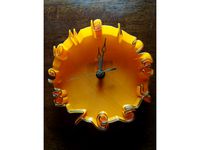
Wavy Clock by PlacidCat
... and get great filament at the same time, please visit proto-pasta using my affiliate link and get yourself some excellent htpla!
thingiverse
free

Practical doorstop by PlacidCat
... and get great filament at the same time, please visit proto-pasta using my affiliate link and get yourself some excellent htpla!
thingiverse
free

Simple wall hanger by PlacidCat
...just dial back your speed to ensure the post cools adequately as it is printed, instead of getting knocked around by the hot end.
thingiverse
free

UFO Spinner! by PlacidCat
... and get great filament at the same time, please visit proto-pasta using my affiliate link and get yourself some excellent htpla!
thingiverse
free

Maze bowl by PlacidCat
...eat filament at the same time, please visit proto-pasta using my affiliate link and get yourself some excellent htpla!
god bless!
thingiverse
free

Comfort bag handle by PlacidCat
...p - it helps me out immensely! if you print one, post your make - i love seeing what people are doing with my designs!
god bless!
thingiverse
free

Monster Clips! by PlacidCat
.... i promise i will put it only towards filament or printer supplies and not basic necessities for me! ;-)
have fun and god bless!
Fidget
3d_export
$10

Fidget Cube
...fidget cube
3dexport
fidget cube 3d modeling<br>3d max<br>auto cad
turbosquid
free
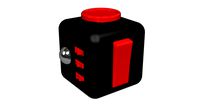
Fidget Cube
...ube
turbosquid
free 3d model fidget cube for download as c4d on turbosquid: 3d models for games, architecture, videos. (1370283)
turbosquid
$20

fidget spinner
...uid
royalty free 3d model fidget spinner for download as c4d on turbosquid: 3d models for games, architecture, videos. (1168895)
turbosquid
$20

Fidget Spinner
...squid
royalty free 3d model fidget snner for download as c4d on turbosquid: 3d models for games, architecture, videos. (1194595)
turbosquid
$10
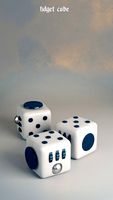
fidget Cube
...osquid
royalty free 3d model fidget cube for download as obj on turbosquid: 3d models for games, architecture, videos. (1173544)
turbosquid
$6

Fidget Cube
...osquid
royalty free 3d model fidget cube for download as max on turbosquid: 3d models for games, architecture, videos. (1205497)
turbosquid
$5

Fidget Spinner
...uid
royalty free 3d model fidget spinner for download as c4d on turbosquid: 3d models for games, architecture, videos. (1190870)
turbosquid
$5

Fidget spinner
...uid
royalty free 3d model fidget spinner for download as dwg on turbosquid: 3d models for games, architecture, videos. (1279860)
turbosquid
$5

Fidget Cube
...osquid
royalty free 3d model fidget cube for download as c4d on turbosquid: 3d models for games, architecture, videos. (1287742)
turbosquid
$2

Fidget cube
...quid
royalty free 3d model fidget cube for download as blend on turbosquid: 3d models for games, architecture, videos. (1488961)
Spinner
turbosquid
$5

Spinner
...turbosquid
royalty free 3d model spinner for download as max on turbosquid: 3d models for games, architecture, videos. (1190412)
turbosquid
$1
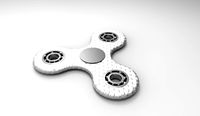
Spinner
...turbosquid
royalty free 3d model spinner for download as dwg on turbosquid: 3d models for games, architecture, videos. (1173525)
3d_export
$5
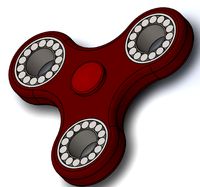
spinner toy
...spinner toy
3dexport
cool spinner toy.
turbosquid
$12
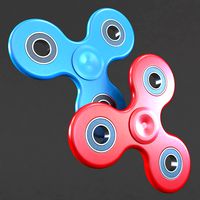
Spinner
...id
royalty free 3d model spinner for download as max and obj on turbosquid: 3d models for games, architecture, videos. (1242592)
turbosquid
$20

Spinner
...lty free 3d model spinner for download as obj, fbx, and blend on turbosquid: 3d models for games, architecture, videos. (1191800)
turbosquid
$15

spinner
...yalty free 3d model spinner for download as max, obj, and fbx on turbosquid: 3d models for games, architecture, videos. (1165932)
turbosquid
$2

Spinner
...oyalty free 3d model spinner for download as ma, obj, and fbx on turbosquid: 3d models for games, architecture, videos. (1187750)
turbosquid
free
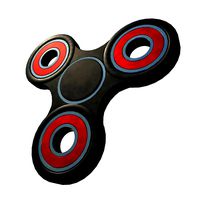
Spinner
...lty free 3d model spinner for download as obj, fbx, and blend on turbosquid: 3d models for games, architecture, videos. (1230908)
turbosquid
$29
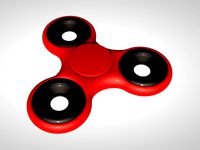
spinner
... free 3d model spinner for download as 3ds, obj, c4d, and fbx on turbosquid: 3d models for games, architecture, videos. (1471160)
turbosquid
$4
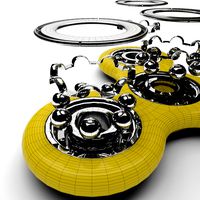
Spinner
...y free 3d model spinner for download as ma, max, obj, and fbx on turbosquid: 3d models for games, architecture, videos. (1201076)
Flower
archibase_planet
free

Flowers
...flowers
archibase planet
flowers flower plant
flowers n280214 - 3d model (*.3ds) for exterior 3d visualization.
archibase_planet
free

Flowers
...flowers
archibase planet
flowers flower plant
flowers n180114 - 3d model (*.gsm+*.3ds) for interior 3d visualization.
3d_export
$6
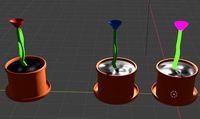
flowers
...flowers
3dexport
flowers
3d_export
$5

flower
...flower
3dexport
flower
3d_export
free

Flowers
...flowers
3dexport
flowers
archibase_planet
free

Flowers
...flowers
archibase planet
flowers flower plant
flowers n110314 - 3d model (*.gsm+*.3ds+*.max) for exterior 3d visualization.
archibase_planet
free

Flowers
...flowers
archibase planet
flowers tulips flower tulip
flowers tulips n180314 - 3d model (*.3ds) for interior 3d visualization.
archibase_planet
free

Flowers
...wers
archibase planet
flowers vase vase with flowers
flowers vase n200215 - 3d model (*.gsm+*.3ds) for interior 3d visualization.
3d_export
$7

Flower
...flower
3dexport
various flowers
3ddd
$1

flower
...flower
3ddd
цветы
flower
